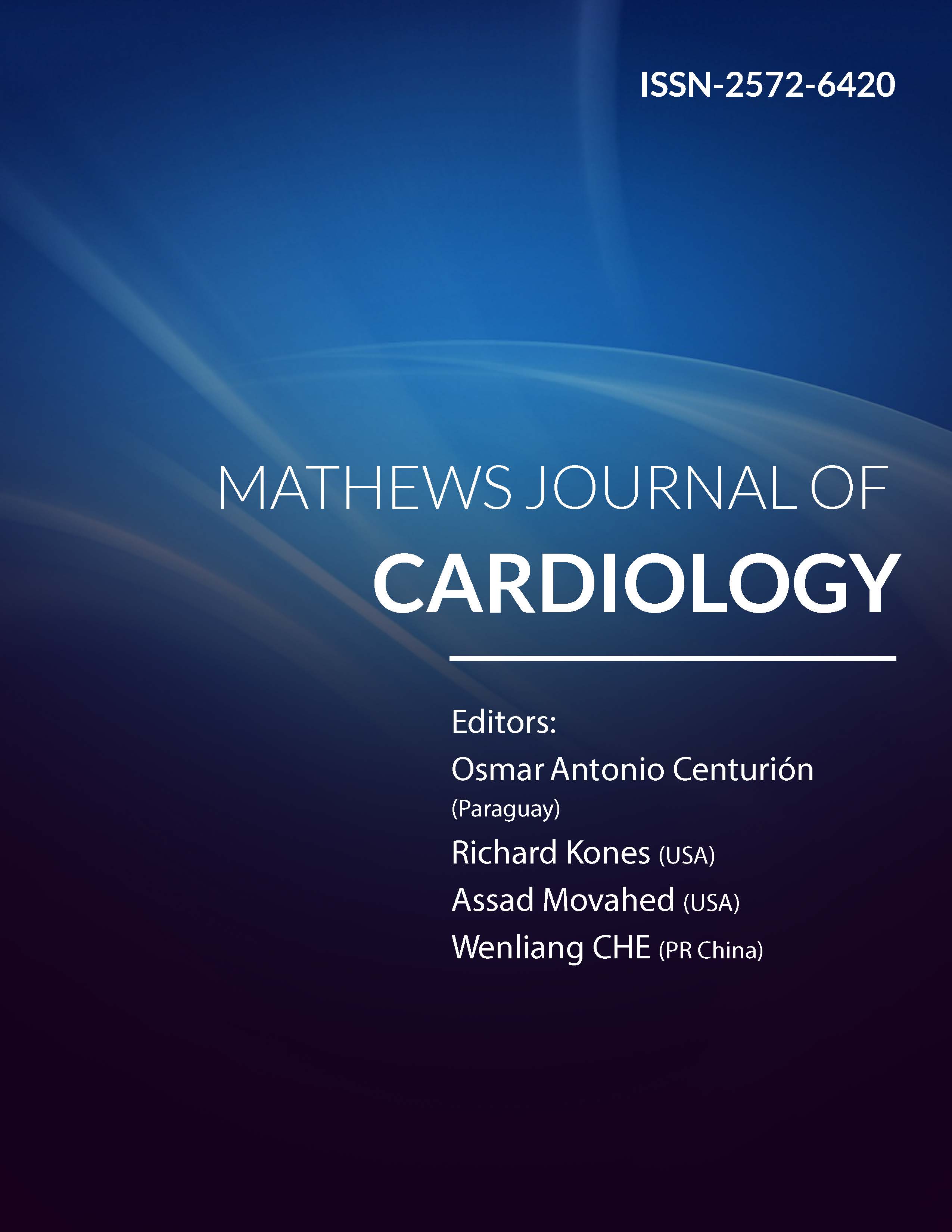
Information Links
Previous Issues Volume 2, Issue 2 - 2017
The Basal, Peak and Maximum Heart Rate Determinants of the Cardiac Patients Who Underwent Dobutamine Stress Echocardiography
Rabindra Nath Das1 *, Youngjo Lee2 , Bansi Badan Mukhopadhya3
1Department of Statistics, University of Burdwan, Burdwan, West Bengal, India.
2Department of Statistics, Seoul National University, Seoul, Korea.
3Department of Community Medicine, Agartal Govt. Medical College and GB Hospital, Agartala, Tripura, India.
Corresponding Author: Das RN, Department of Statistics, University of Burdwan, Burdwan, West Bengal, India, Tel: +03422634975; E-Mail: [email protected]
Received Date: 11 May 2017
Accepted Date: 28 Jun 2017
Published Date: 31 Jun 2017
Copyright © 2017 Das RN
Citation: Das RN, Lee Y and Mukhopadhya BB. (2017). The Basal, Peak and Maximum Heart Rate Determinants of the Cardiac Patients Who Underwent Dobutamine Stress Echocardiography. Mathews J Cardiol. 2(2): 013.
ABSTRACT
Objectives: The present report aims to identify the determinants of the basal, peak and maximum heart rates of cardiac patients who underwent dobutamine stress echocardiography (DSE).
Background: The determinants of basal, peak and maximum heart rates for the DSE data were not derived, considering the real situations that the responses were positive & heteroscedastic. Moreover, these determinants are little known in the literature.
Methods: The considered data set (UCLA stress echocardiography data) in the current study consists of 31 factors/variables on 558 individuals, which is originally taken from a total of 1183 patients referred for DSE between March 1991 and March 1996 to the UCLA Adult Cardiac Imaging and Hemodynamics Laboratories. The responses basal, peak and maximum heart rates are heterogeneous, positive, and gamma distributed, therefore, joint generalized linear gamma model fitting is used.
Results: The mean basal heart rate (bhr) increases as the percent maximum predicted heart rate (pctMphr) (P < 0.001), or maximum blood pressure (mbp) (P < 0.001) increases. The mean bhr decreases as the basal blood pressure (basebp) (P < 0.001), or the dobutamine dose at maximum double product (dobdose) (P = 0.074), or age (P = 0.003) increases. The mean peak heart rate (pkhr) increases as the maximum heart rate (maxhr) (P < 0.001), or dpmaxdo (P < 0.001) increases. The mean pkhr decreases as the systolic blood pressure (sbp) (P < 0.001) increases. The mean pkhr is higher for the DSE cardiac patients of male (P = 0.076) than female, or the patients with no history of diabetes mellitus (hxofDM) (P = 0.003). The mean maximum heart rate (maxhr) increases as the pkhr (P < 0.001), or sbp (P < 0.001), or pctMphr (P < 0.001), or dpmaxdo (P < 0.001), or ejection fraction on dobutamine (dobEF) (P = 0.062) increases. The mean maxhr decreases as the mbp (P < 0.001), or age (P < 0.001) increases. There are many determinants of the variances of bhr, pkhr and maxhr.
Conclusions: Mean basal heart rate is positively associated with the maximum blood pressure (BP), or percent maximum predicted heart rate, or double product of basal BP & basal heart rate, while it is negatively associated with basal BP, or age. The mean peak heart rate is negatively associated with the systolic BP, or age, or sex, while it is positively associated with maximum heart rate, or percent maximum predicted heart rate. The mean maximum heart rate is negatively associated with the maximum BP, or age, while it is positively associated with systolic BP, or percent maximum predicted heart rate. Many of the present findings and their effects are almost new in the heart rates diagnosis literature.
KEYWORDS
Cardiac Parameters; Dobutamine Stress Echocardiography; Gamma Models; Heart Rates; Non-Constant Variance.